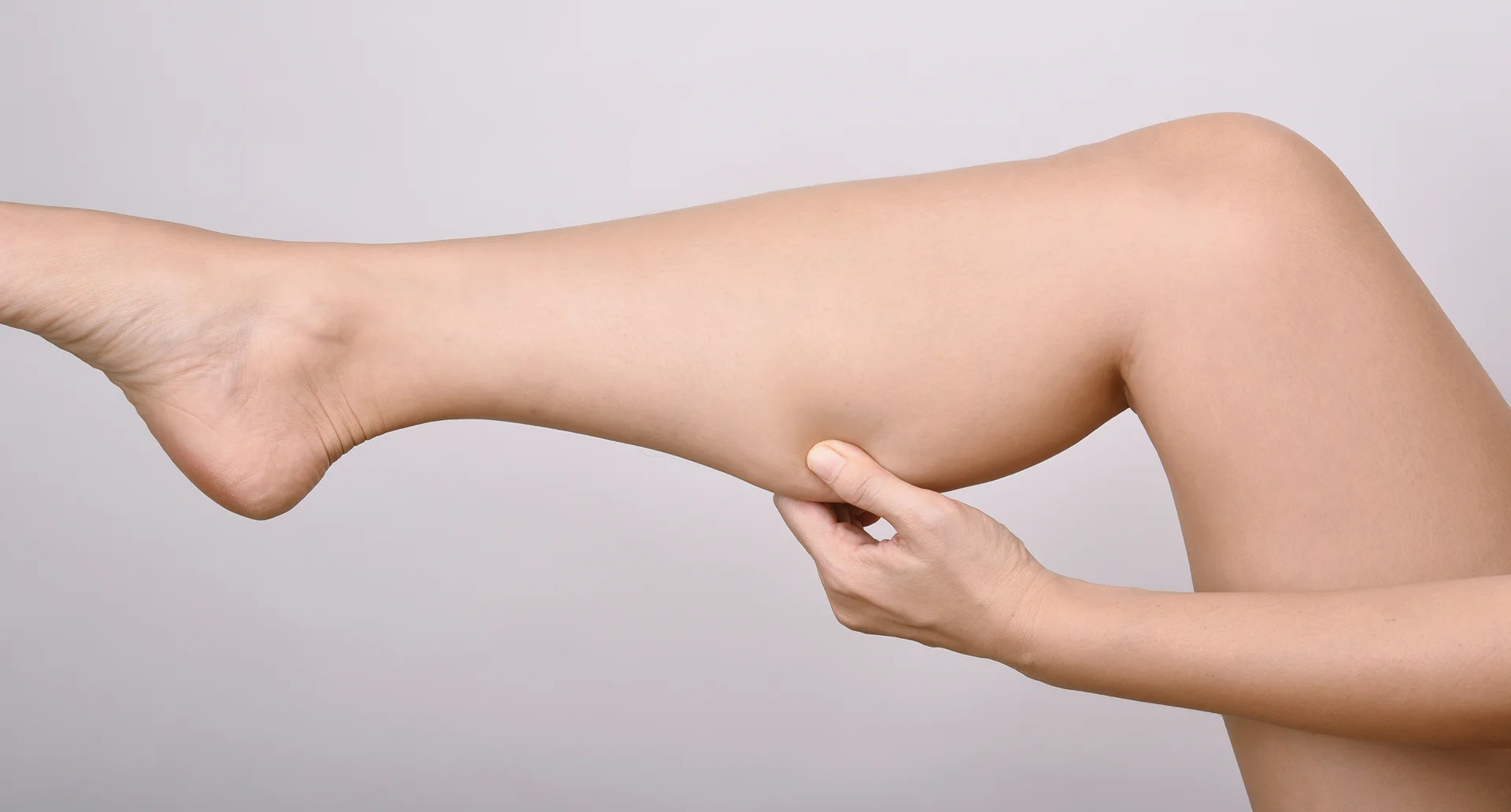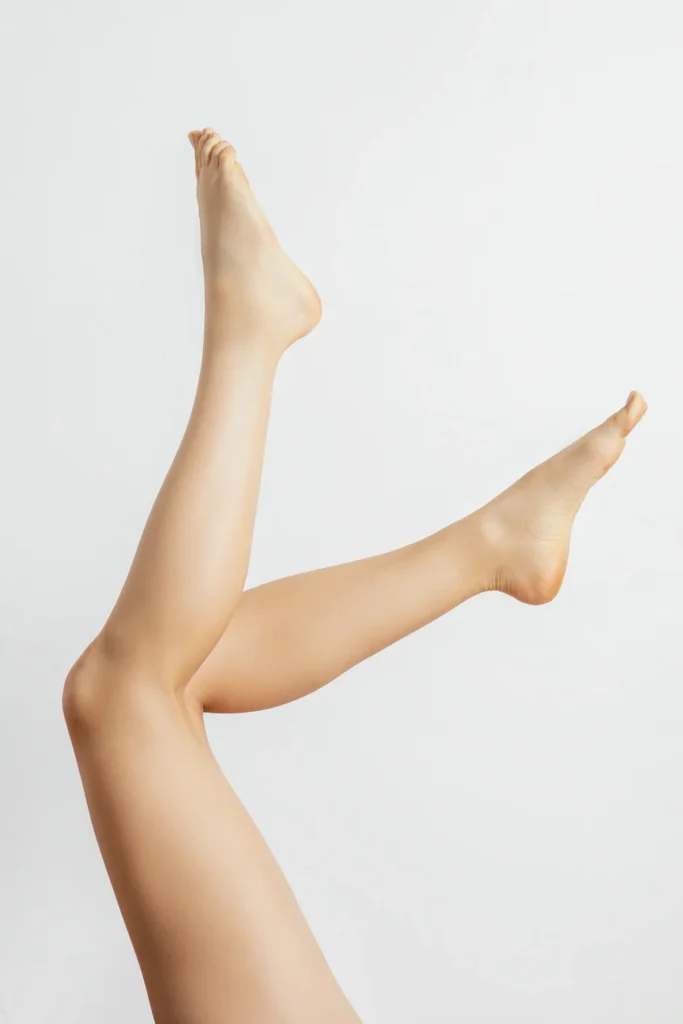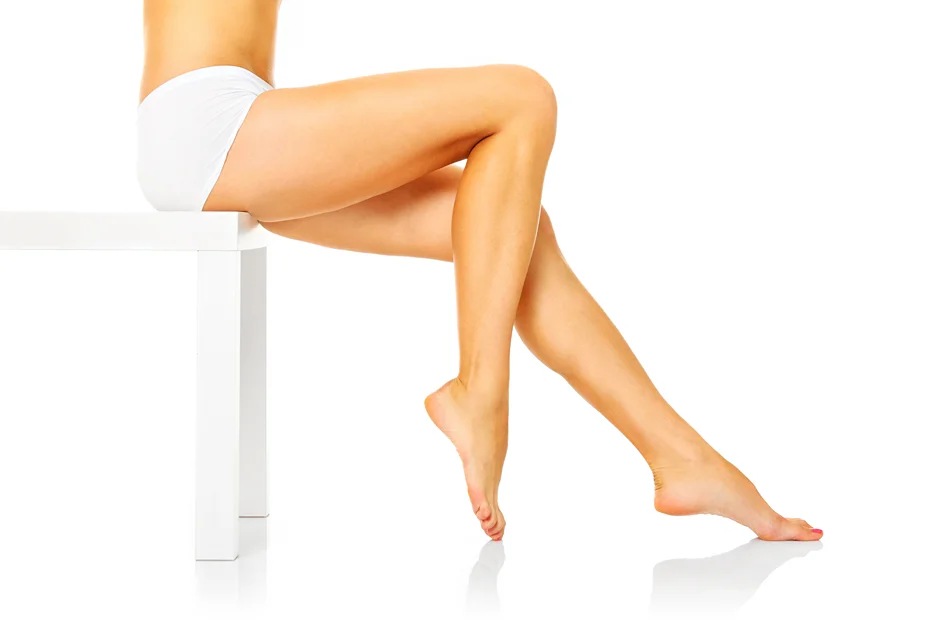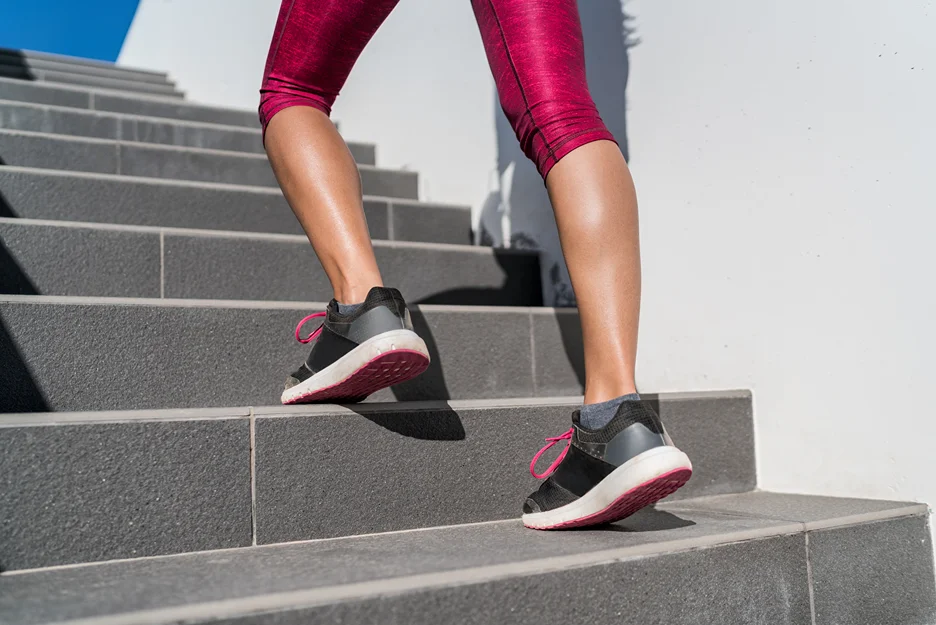Menu
(908) 628-1070

Looking to slimming your calves without surgery or downtime?
CoolSculpting may be the non-invasive fat reduction treatment you're looking for. This technology offers a modern beauty solution for stubborn fat deposits on lower legs.
CoolSculpting is an FDA-cleared, non-surgical fat freezing treatment that targets and eliminates fat cells in specific areas like the calves. A gel pad and applicator vacuum up the treatment area and deliver controlled cooling to freeze and destroy the fat cells, which the body naturally metabolizes over time.
Diet and exercise can't always eliminate exercise-resistant fat bulges on the calves. CoolSculpting reduces cellulite and slims calf shape without invasive procedures like liposuction.
Yes, body sculpting can be done on calves. Calf liposuction is a form of body sculpting that can contour the legs. Other non-surgical treatments like Botox injections can also sculpt the calves by reducing muscle size. Radiofrequency nerve and muscle ablation is another non-surgical treatment that can be used for calf sculpting.
While cryolipolysis (fat freezing) treatments like CoolSculpting are commonly used on many body areas, there is limited information about using this method for calf fat reduction. It's important to consult an experienced provider to determine if cryolipolysis is a viable option for slimming down your calves based on your needs and goals.
Some practices may offer this as an off-label treatment for calves. However, other approaches like liposuction may be better suited or recommended depending on factors like the amount of fat present.
Fat dissolving injections are a non-surgical option that can target small pockets of fat, such as those around the ankles, to reduce their size. However, for more significant fat reduction in the calves, liposuction is often recommended as a more effective treatment. It's important to note that these treatments are typically used for fat reduction rather than muscle reduction.

The best candidates for calf CoolSculpting are at or near their ideal body weight but have noticeable fat bulges on the lower legs.
Your skin should be relatively elastic, as opposed to being extremely loose or inelastic. It's important to have realistic expectations - while CoolSculpting can slim, it won't lead to dramatic reshaping.
Those with circulatory or nerve conditions may not be good candidates. For extensive contouring, traditional liposuction may be a better option.
Your first step is a consultation with a CoolSculpting provider like a dermatologist or plastic surgeon. They'll evaluate your calves and goals to determine if you're a candidate and develop a customized treatment plan that maps out the number of cycles or sessions needed.
During CoolSculpting treatment, gel pads protect the skin, and the applicator vacuums the treatment area and delivers controlled cooling. The CoolSculpting Elite or CoolFit Applicator may be used based on the treatment area and desired results.
Most patients need several treatment sessions 4-6 weeks apart to reduce their calves. Your provider will recommend the number of cycles during the consultation.
After CoolSculpting on the calves, you may experience temporary redness, swelling, bruising, or numbness. This is normal and will subside in the days/weeks following treatment.
Results will start to show in 1-3 months as your body flushes out the frozen fat cells. You'll notice a smoother, more sculpted appearance to your calves as the fat reduction occurs.
Some patients are satisfied after one treatment, while others opt for more sessions to achieve their desired contouring goals. Your experience may vary.
For those considering calf treatments, CoolSculpting offers some compelling advantages over more invasive procedures like liposuction:
However, liposuction may be a better choice for those wanting more dramatic reshaping or fat removal from the calves and outer thighs. Costs also tend to be higher for CoolSculpting compared to liposuction.
For some patients, a combination approach using CoolSculpting along with injections or other complementary treatments may be recommended by their doctor to achieve their desired shape.

To get the best possible results from your calf CoolSculpting treatment, there are some tips to keep in mind:
Follow all pre and post-treatment instructions provided by your CoolSculpting provider. This will minimize side effects and ensure optimal results.
Not all CoolSculpting providers are equal. To have the best experience and results, it's important to select an experienced professional with the proper qualifications:
The cost of CoolSculpting for calves can vary depending on factors like:
On average, a full calf CoolSculpting treatment plan from an experienced provider costs $2,000 - $4,000. Many practices offer financing options to make it more affordable.
While more expensive upfront than liposuction, the lack of anesthesia fees and downtime can make the overall costs comparable for some patients. Be sure to get quotes from a few clinics during your consultations.
For those looking to treat both the upper legs and calves, many providers offer combination treatment plans. This can create a more comprehensive, contoured look to the full leg area.
Thigh and calf CoolSculpting may be discounted when done together. Your provider can provide package pricing details.
Treating the thighs and calves at the same time also means a single recovery period, which can minimize any downtime or disruption to your normal routine.
While CoolSculpting is a great option for calf fat reduction, it's not the only treatment available for reshaping the legs. Other popular options include:
The ideal treatment plan for you will depend on your specific concerns, budget, and goals. Many patients opt to combine treatments like CoolSculpting and injections for optimal results.
CoolSculpting is a non-invasive option for calf fat reduction, but there are other non-surgical treatments. Kybella injections help reduce small pockets of fat around the ankles, while liposuction is recommended for more significant calf slimming.
Another non-surgical approach is calf slimming injections that use muscle-relaxant proteins to reduce the size of overdeveloped calf muscles, specifically the gastrocnemius muscle. This process takes around 4-6 weeks and typically requires maintenance injections every 6-12 months.
The ideal non-surgical treatment depends on whether your enlarged calves are due to excess fat or overdeveloped musculature. Your provider can evaluate and recommend the best approach during your consultation.

Aside from cosmetic treatments, diet and exercise can slim down calves. Avoid intense calf exercises that increase muscle size if your goal is calf reduction.
For some, genetics play a role in having naturally large calves. In these cases, non-surgical methods may not be as effective, and surgical options like liposuction may be required to achieve significant slimming.
When considering calf slimming, it's crucial to identify the root cause - excess fat, muscle bulk, or natural body shape, to determine the appropriate treatment plan.
For more dramatic calf reshaping or fat removal, liposuction is often recommended. It effectively sculpts the calves by removing excess fat, but requires an experienced specialist for optimal results.
Newer body sculpting technologies are also emerging that may be options for surgical calf contouring. For example, radiofrequency nerve and muscle ablation can be used to reduce the size of overdeveloped calf muscles.
While more invasive than non-surgical options, procedures like calf liposuction and body sculpting offer dramatic and permanent reshaping results for those troubled by excess calf fat or musculature.
There are a variety of surgical and non-surgical options available today for re-contouring and slimming down enlarged or overly muscular calves. The "best" treatment will depend on your unique circumstances and goals.
It's essential to have an honest evaluation to determine if your concerns are from excess fat, muscle bulk, or your natural body shape. Then, your provider can recommend treatments like injections, CoolSculpting, liposuction, or body sculpting.
The key is partnering with an experienced professional, having realistic expectations, and selecting an approach best aligned with what you hope to achieve. With so many choices available, obtaining your ideal calf appearance is increasingly possible.